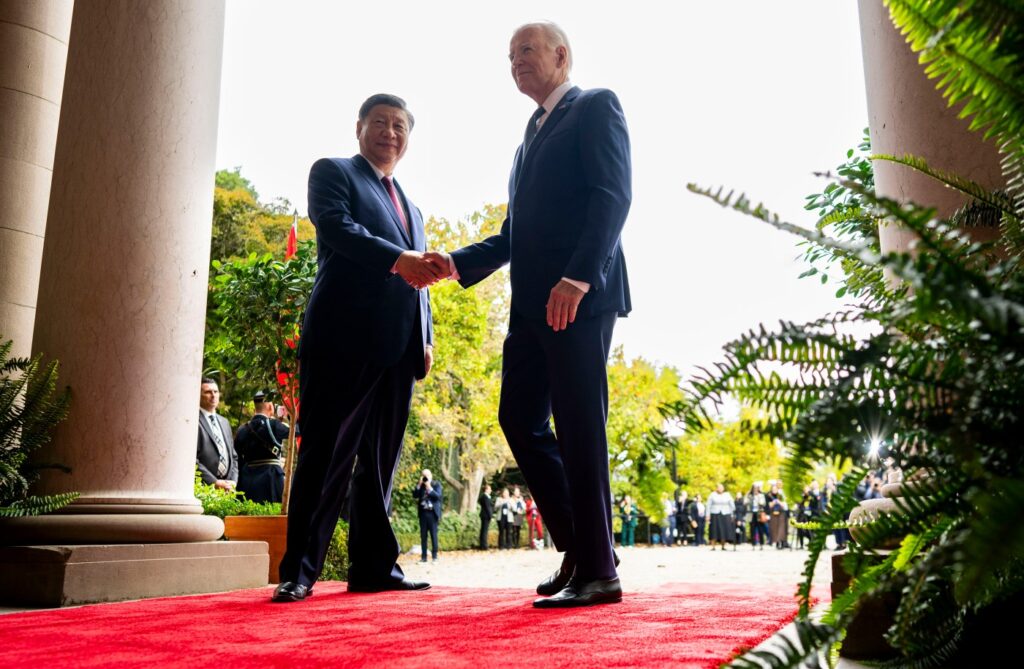San Francisco cleaned up its act and played host to a Who’s Who of global import this past week as political, business and cultural leaders gathered from around the world — U. S. President Joe Biden and Chinese President Xi Jinping leading the pack — for the Asia-Pacific Economic Cooperation forum.
There were plenty of other stars circling in their orbit: Apple’s Tim Cook, Tesla’s Elon Musk, Golden State Warriors Coach Steve Kerr and singer Gwen Stefani, to name a few. The week’s events in and around the Moscone Center featured speeches, announcements, protests, world leader one-on-ones, political fundraisers and parties for what one homeless fellow crouched at a bus stop across the street from the convention center called the “fancy people. ” So what are the key takeaways from this coming together of the powerful and politically connected? The event provided an opportunity for APEC attendees Biden and Xi to hold only their second face-to-face meeting as presidents.
Their last in-person meeting was a year ago, but the two superpowers’ relations have since frosted over, particularly after former House Speaker Nancy Pelosi’s trip to longtime U. S. ally Taiwan in August 2022.
That prompted China to cease military communications with the U. S. and launch provocative military exercises near Taiwan.
Chinese leaders also tabled other important discussions surrounding climate cooperation. Despite the tranquil setting at Filoli Gardens in Woodside, Wednesday’s meeting, as Biden colorfully put it the next day, wasn’t “all kumbaya. ” At a news conference later that day, Biden declined to retract his description of Xi earlier this year as a “dictator,” and he acknowledged to executives that “we have real differences with Beijing when it comes to maintaining a fair and level economic playing field and protecting your intellectual property.
” Labels aside, the meeting did yield a positive result: a resumption of military communication channels between the U. S. and China to reduce the risk of what Biden called “accidental miscalculation.
” China also committed to work with the U. S. on the climate, artificial intelligence and efforts to counter the illicit narcotics trade of fentanyl.
And the two leaders committed to renewing a Science and Technology Cooperation agreement that Bay Area leaders consider important. San Francisco and the broader region have taken a beating lately from COVID-19 pandemic shutdowns and the lingering hit to the economy, creating ghost towns of empty office buildings and worsening already worrisome trends of homelessness, crime, job losses, unaffordable housing and the ensuing flight of residents and businesses. “A major economic benefit (of the economic forum) will be the change of perception about this place and its economy and what its future looks like,” said Sean Randolph, senior director of the Bay Area Council Economic Institute.
“This will help reduce the ‘doom loop’ narrative that’s developed in the media around San Francisco, that companies are leaving the Bay Area, stories focusing on the homeless, which of course we have,” Randolph said. “I think having this event here showed that’s not the complete narrative, that San Francisco and the greater Bay Area is spectacular and safe and incredibly dynamic economically, and diverse. ” The event was the largest international gathering in San Francisco since the United Nations formation in 1945 and was larger than that.
APEC drew some 1,200 CEOs and nearly 30,000 delegates from governments and organizations. Along with foreign press, the event was expected to bring 20,000 people to San Francisco and pump $50 million into the economy. “There was networking going on at a massive level,” Randolph said, noting announced new Bay Area openings of a Japanese startup accelerator and Singapore enterprise office to support new businesses.
“These trade and economic ministers just fanned out across the region. The summit led to diplomatic progress advancing three important concerns — addressing the fentanyl drug epidemic, reducing carbon emissions blamed for climate change, and preventing supply chain disruptions that have contributed to shortages of necessities and price spikes. The forum provided an opportunity for Gov.
Gavin Newsom to advance his climate agenda with leaders of the United Kingdom, Australia, Canada, Singapore and Vietnam, and to promote them to CEOs at the summit. President Biden discussed fentanyl, climate and supply chain concerns with China’s Xi and Mexico President Andrés Manuel López Obrador. And the White House announced new agreements with signatories of the Indo-Pacific Economic Framework for Prosperity that include a first-of-its-kind supply chain agreement and substantial progress on a clean economy agreement.
For activists in a variety of causes — labor, climate, Palestine, human rights in China, women’s rights — the gathering of so many world leaders and news media in San Francisco was a rare opportunity to make their case to a global audience. APEC organizers and city leaders knew there would be demonstrations and that how they handled them could overtake news from the event itself and hurt global impressions of San Francisco. Thousands demonstrated outside multiple venues throughout the week.
Supporters and critics of China lined roadways along motorcade paths for Xi. And there were clashes between supporters of Tibet and pro-China advocates, with pushing and shoving, but police kept the two sides apart. The most impactful of the demonstrations came Thursday when Palestinian supporters of a ceasefire in Gaza , leading to 80 arrests.
Yet the blockade appeared to have little effect on the APEC attendees, most of whom were staying at hotels in the city, and mostly impacted commuters. .
From: mercurynews
URL: https://www.mercurynews.com/2023/11/18/here-are-five-key-takeaways-from-the-bay-areas-global-summit/
